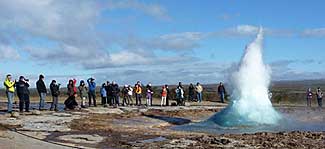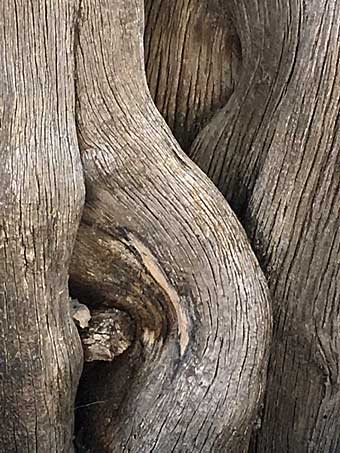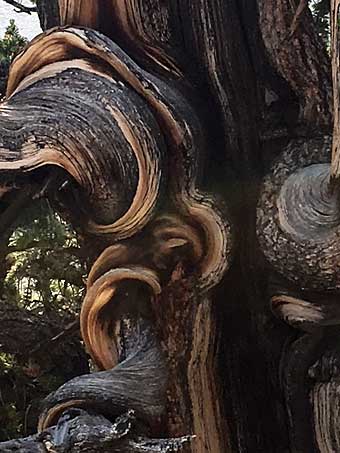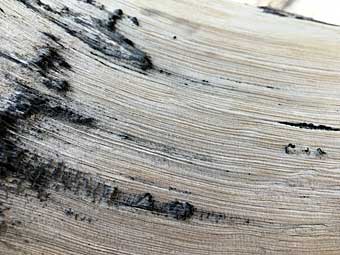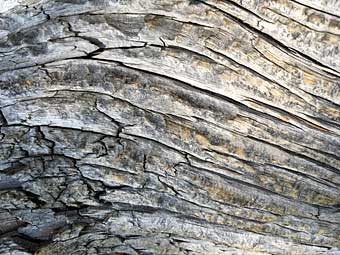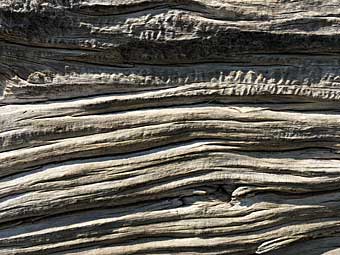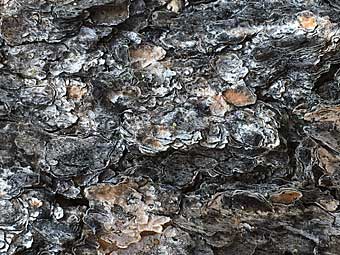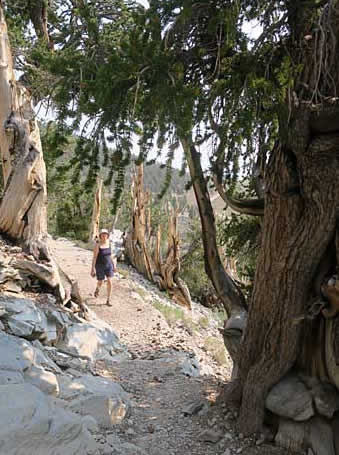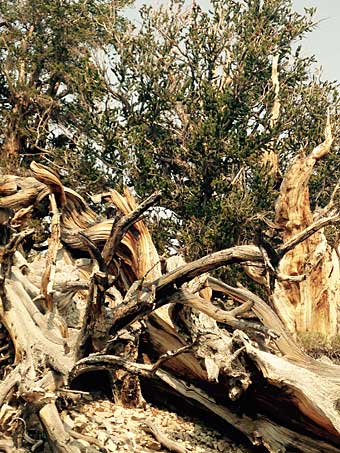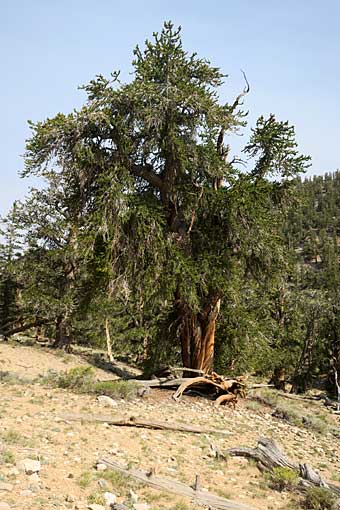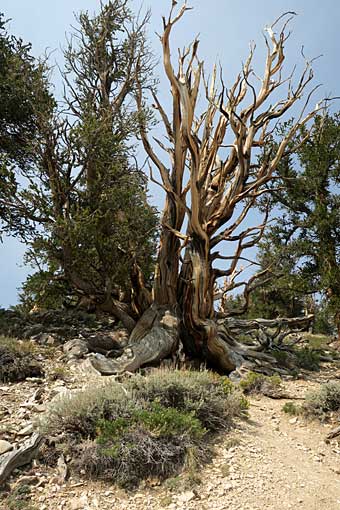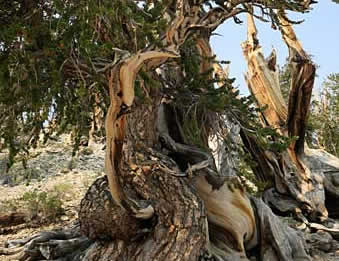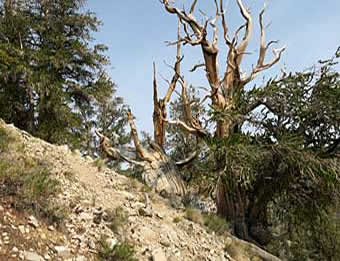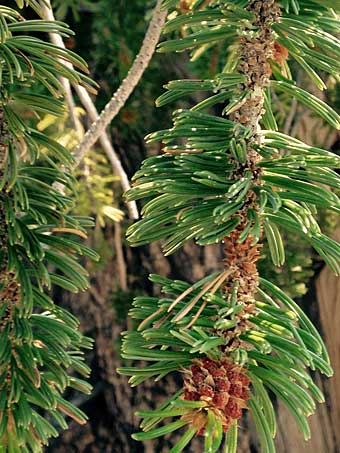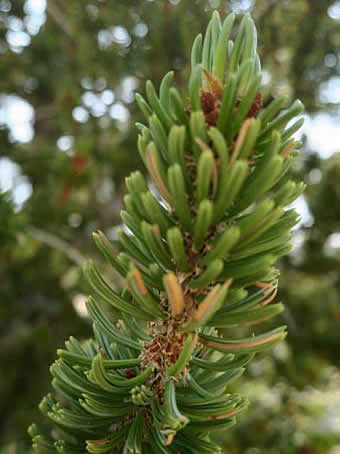| |
|
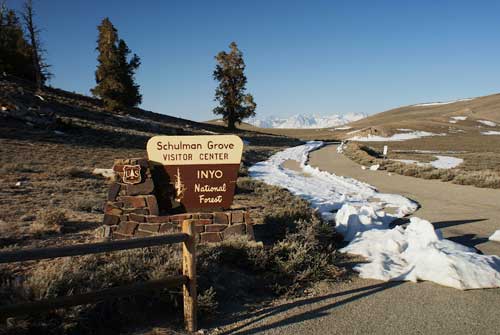
Entrance to Schulman Grove in Ancient Bristlecone Pine Forest
Courtesy shocchris1.blogspot
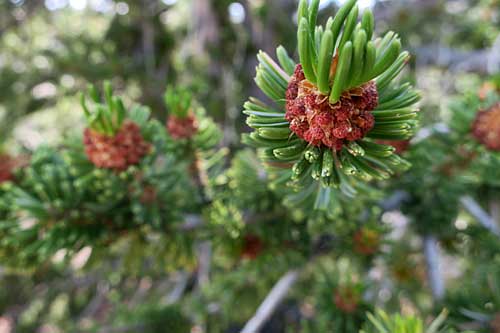
Bristlecone pine tree pinecones
It is said that the Biblical figure Methuselah lived 969 years, the longest lifespan of all figures in the Bible. Impressive. But he was just a youngster compared to the Great Basin bristlecone pine trees in Eastern California’s White Mountains.
Shaped in twisted, tormented forms that evoke thoughts of gory Halloween horror movies, bristlecone pines are show-their-age survivors. That’s because the trees, including those in the White Mountains’ Methuselah Grove, have survived epochs of climate upheavals, including ice ages and volcanic eruptions, for more than 4,000 years.
| |
Among the few places to see bristlecone pines is the Methuselah Grove Trail in the Inyo National Forest’s Ancient Bristlecone Pine Forest. The Methuselah Grove Trail, about 35 miles from Big Pine, California, is a four-and-a-half-mile loop that begins at a visitor center, located at a breath-taking elevation of 9,845 feet. Because of its elevation, the self-guided trail is best taken between April and September from the visitor center that’s open only in the summer. When open, the Schulman Grove Visitor Center offers daily interpretive talks, natural history programs and access to the trail.
Seeing bristlecone pines is literally a breath-taking experience because they grow at elevations between 9,800 and 11,000 feet above sea level. Even more breath-taking than the elevation are the up-close views of dozens of bristlecones. But the legendary Methuselah Tree, estimated to be 4,847 years old, is intentionally not identified with signage in order to prevent vandalism. The Methuselah is considered the world’s oldest known, confirmed living non-clonal organism. |
|
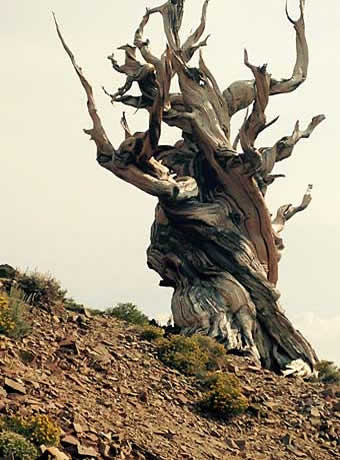 |
|
| |
|
|
Bristlecone pine tree trunk in its twisted glory |
|
| |
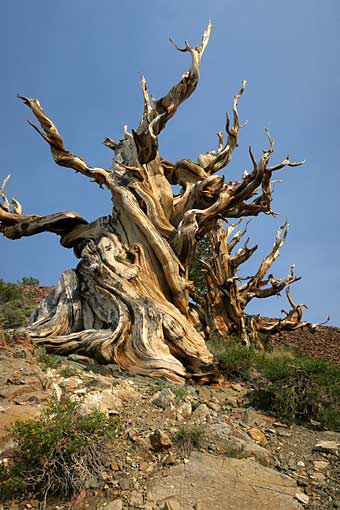 |
|
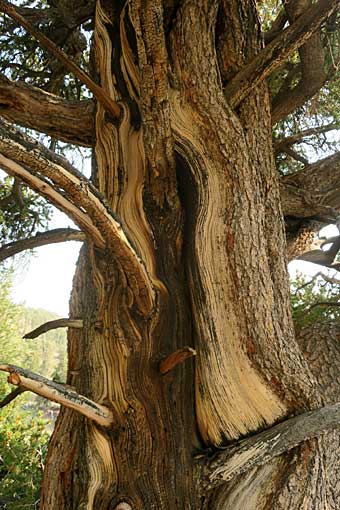 |
|
| |
|
|
|
|
| |
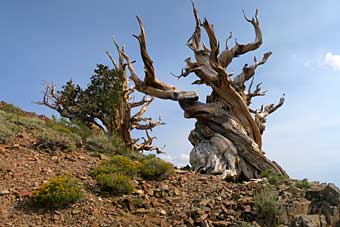 |
|
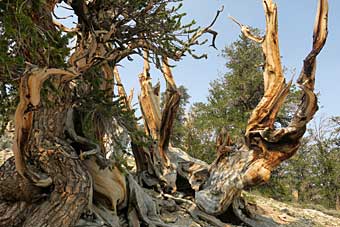 |
|
| |
|
|
|
|
| |
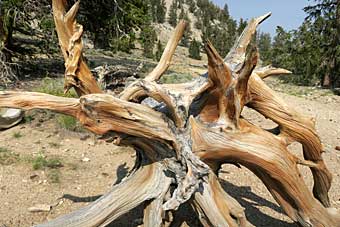 |
|
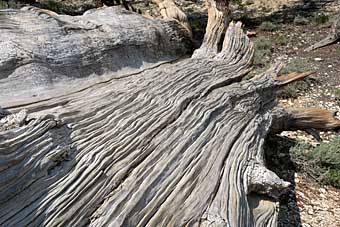 |
|
| |
|
|
|
|
| |
 |
|
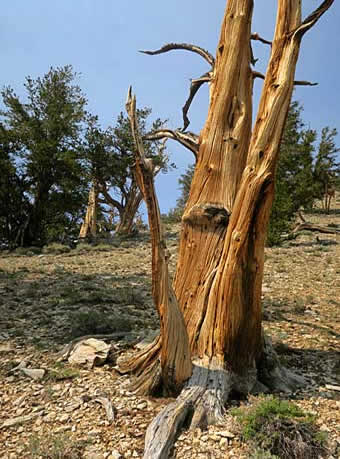 |
|
| |
|
|
|
|
| |
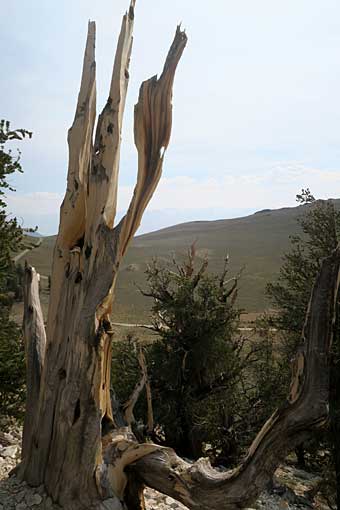 |
|
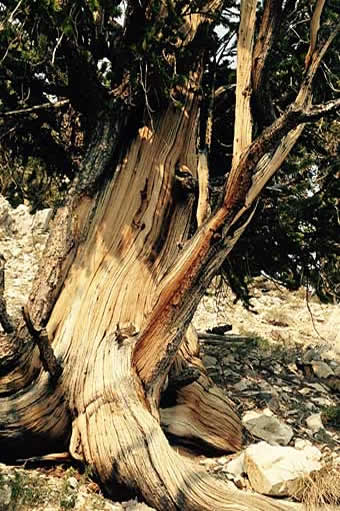 |
|
The pines unusual configurations are caused by weather extremes, including bitter, harsh winters and frequent high winds. The results are trees with more twists than even Chubby Checker could imagine. Unusually, because of the extreme growing conditions, bristlecones grow very slowly and some years don’t add the usual ring of growth. That slow growth also makes the wood dense and, as a result, resistant to erosion, insects, fungi and rot.
But the pleasures of hiking along the trail include seeing and marveling at resilient trees that thrive in the impossible, some seemingly bursting from limestone and other unlikely terrain. But, as scientists explain, because bristlecones grow where most other trees and vegetation cannot, they’re less vulnerable to forest fires.
Our hike was through the Inyo National Forest’s Methuselah Grove, located in the Schulman Grove. But the extremely rare trees are also found in remote reaches of Nevada’s Great Basin National Park, which has a trio of groves – Wheeler Peak, Mount Washington and Eagle Peak.
Facts and legends abound. Along with references in the Bible, the word Methuselah is synonymous with longevity. For tree lovers, the name bristlecone has its own genesis. Bristlecone needles, which are about an inch long and grow in packets of five, completely surround the branches and may extend back a foot or more along the branch, giving it the appearance of a bottle brush. Young, developing cones are colored deep purple, which reportedly helps absorb the sun’s heat. After two years, the mature cones turn brown. Those cones have scales tipped with claw-like bristles, or “bristlecones.”
There are also reasons for the trees oddly configured, mind-twisting appearance. Because they grow in extremely high elevations, sections of bristlecones of supported by large roots that feed only those sections directly above them. As a root dies by soil erosion, only the portion of the tree above that root dies, which is why some bristlecone pines have only one or two living sections.
Scientific explanations and legends about bristlecones and the Methuselah tree are many and provide rich fodder for fascination. But the best way to truly appreciate the bristlecones’ wonderfully eclectic characteristics, is to take a hike, and see and experience them yourself. And, because of the bristlecone pines legendary longevity, they’ll likely be there when you decide to go. The Great Basin bristlecone pines are patient and likely—and hopefully even in an era of climate change—will be around for thousands more years.
Getting There
The Patriarch Grove parking lot is 35 miles from Big Pine, California. Take Highway 168 east, a narrow and steep mountain road, for about 12 miles. Turn left on White Mountain Road and drive 10 miles to Schulman Grove, where the pavement ends. Continue another 12 miles on graded dirt road, then turn right at the signed junction for Patriarch Grove and go another mile to the parking lot. The dirt road is not recommended for light passenger cars.
About the Author
| |
Lee Juillerat is a semi-retired writer-photographer who lives in Southern Oregon. He is a frequent contributor to several magazines, including “Southern Oregon Magazine,” “The AG Mag,” “Range,” and “The Cattle Mag.” He has written and co-authored books about various topics and places, including Crater Lake National Park and Lava Beds National Monument, and, most recently, “Ranchers and Ranching: Cowboy Country Yesterday and Today.” Lee has produced photo-stories for High On Adventure for more than 20 years. He can be contacted at 337lee337@charter.net. |
|
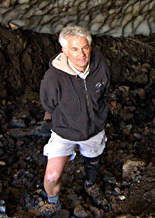 |
|
| |
|
|
|
|
|
|
|
